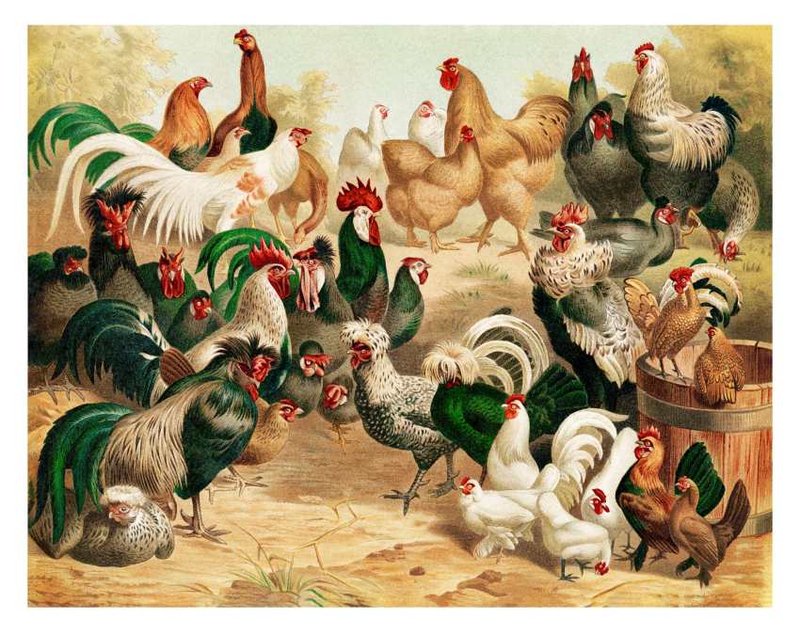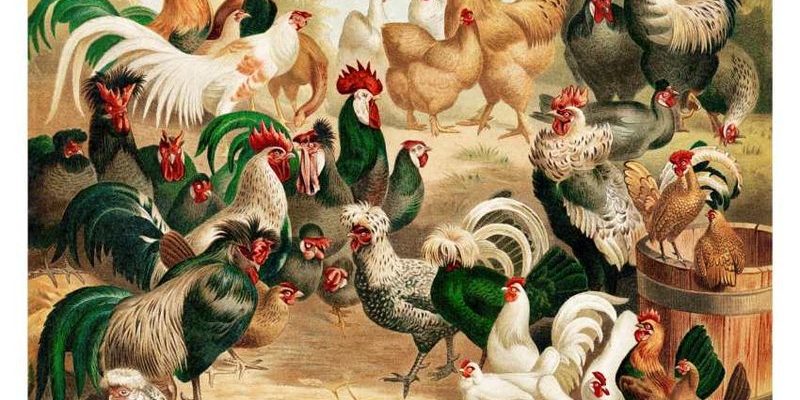
You might be wondering, “Where did all these chickens come from?” and “How did they become the most widespread bird on the planet?” Let me explain. Chickens have evolved from wild ancestors and have taken on various roles in cultures across the globe. Their transformation from scrappy, wild birds to the domesticated chickens we know today is nothing short of remarkable. So, grab a cup of coffee, and let’s dive into the evolution and history of the chicken.
The Wild Ancestors of Chickens
The story of chickens begins in the dense jungles of Southeast Asia, particularly in regions like Thailand and India. The red junglefowl (Gallus gallus) is the primary ancestor of domesticated chickens. These birds were initially shy creatures, wandering the forests and roosting high in trees. Unlike today’s domesticated chickens, wild junglefowl were smaller, more colorful, and boasted a wild disposition.
Around 8,000 years ago, humans began to settle down and farm the land. This led to the domestication of the red junglefowl, initially for their meat and eggs. The process wasn’t as simple as just bringing them home; it involved a lot of trial and error. Early farmers noticed that some birds were tamer and laid more eggs. Over generations, they selectively bred these chickens, which ultimately led to the domesticated chicken we know today.
Interestingly, chicken domestication wasn’t just about convenience. It played a crucial role in human societies, providing a steady source of protein and helping sustain growing populations. Talk about a win-win situation!
The Chicken’s Journey Across the Globe
Once domesticated, chickens quickly spread throughout Asia, Africa, and eventually to Europe. This was no small feat—it required both humans and chickens to adapt to new environments. For example, as chickens arrived in Europe, they faced different climates and challenges, leading to further changes in their breeding.
By the time explorers set sail to the Americas in the 15th century, chickens were already well-established in many parts of the world. They found their way into every corner of the globe, from the bustling markets of Asia to the farms of Europe.
Interestingly, not all chickens are created equal. Just as humans have diverse cultures, chickens have developed various breeds, each suited to different environments and purposes. Some breeds are bred for their meat, while others thrive for their egg production. The variety is astounding! Chicken breeds like the Leghorn are known for their prolific egg-laying, while the Cornish is famous for its meat.
Chickens aren’t just a source of food; they also have significant cultural and symbolic value in many societies. In some parts of Africa, chickens are used in traditional rituals and ceremonies, symbolizing prosperity and fertility. Do you remember the famous saying, “Don’t count your chickens before they hatch”? This reflects the deep-rooted cultural ties humans have with these birds.
In Asia, chickens hold a special place in festivals and celebrations. For instance, in Chinese culture, the chicken represents good fortune and is often featured in meals during the Lunar New Year celebrations. You might see whole roasted chickens adorned on family dining tables, representing unity and prosperity for the coming year.
Chickens have even made their way into art and literature. Artists have painted them, and writers have used them as symbols in their stories, showcasing their importance and connection to human life. It’s hard to imagine a world without these remarkable birds!
Fast forward to today, and the chicken industry has evolved into a massive global enterprise. Chickens are now one of the most widely consumed sources of protein worldwide. The modern chicken farm is a far cry from the small, family-run farms of yesteryear.
Today, most chickens are raised in large commercial operations that focus on maximizing production. This often means breeding chickens that grow faster and lay more eggs, which raises concerns about animal welfare. The classic image of happy chickens roaming freely is becoming less common in many places.
However, there’s a growing movement advocating for more humane farming practices. Many consumers are now looking for free-range or organic options, showing that the connection between humans and chickens is still meaningful. People want chickens raised in better conditions, and this shift is starting to change the industry.
Chickens aren’t just culturally significant; they also provide essential nutrition. Chicken meat is high in protein and low in fat, making it a popular choice for many diets. Additionally, eggs are packed with vitamins and minerals, making them a staple food in countless households.
The versatility of chicken is another reason for its popularity. You can prepare it in countless ways—grilled, roasted, fried, or in soups. The possibilities are endless! For those who enjoy cooking, experimenting with different chicken recipes can be a fun and delicious challenge.
But it’s not just about the meat and eggs. Chickens also contribute to sustainable farming practices. They help control pests, fertilize the soil with their droppings, and can even be part of a healthy composting system. It’s amazing how such a humble animal can play multiple roles in our lives and the environment.
As we look ahead, the future of chickens in agriculture remains dynamic. With ongoing advancements in breeding technology, we may see even more changes in chicken genetics, potentially enhancing their resilience and adaptability. However, with these advancements come questions about ethics and sustainability.
More farmers are exploring alternative farming methods, such as rotational grazing and integrated pest management, which can improve animal welfare and produce healthier birds. Consumers are becoming increasingly conscious of where their food comes from and how it’s produced. This shift, combined with growing concerns about climate change, is pushing the industry toward more sustainable practices.
The conversation about chickens isn’t just about food—it’s about how we respect and care for these animals that have been our companions for thousands of years. The way we approach chicken farming could significantly impact the environment and animal welfare, shaping the future of the industry.
From wild junglefowl to a global agricultural powerhouse, the evolution of the chicken is a story of adaptation and relationship. Chickens have woven themselves into the fabric of human history, offering sustenance, companionship, and cultural significance.
As we continue to raise and enjoy chickens, it’s essential to appreciate their journey and consider our role in their future. By advocating for better farming practices and supporting sustainable options, we can ensure that the relationship between humans and chickens remains a thriving one.
So, the next time you enjoy a delicious chicken meal or hear a rooster crow in the morning, take a moment to reflect on their incredible history. After all, it’s not just about chicken; it’s about a bond that has lasted through the ages.

